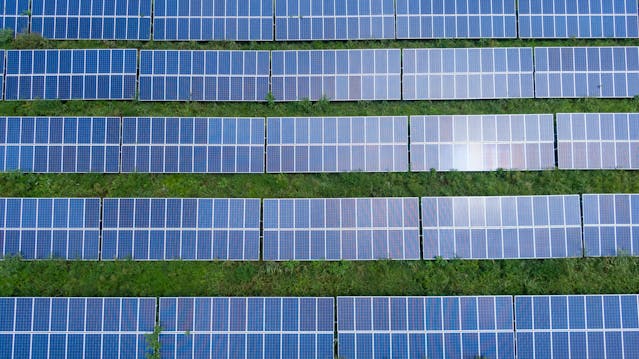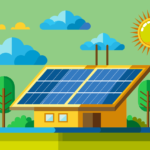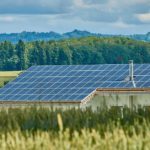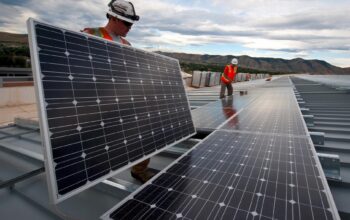The world is like one big energy crisis waiting to happen – crowded with bustling cities, teeming with factories, and buzzing with technological marvels, all voraciously gobbling up precious power.
The sun, however, has an answer to our seemingly insatiable needs, an untapped gold mine of energy – solar power.
But how does this seemingly magical feat occur? Well, sit back, you tan goddess and solstice celebrators, for we’re about to uncover the sunny side of science.
Photovoltaics: Power in Every Beam
The dance of light across your backyard on a summer’s day – it’s not just for aesthetic pleasure. Every photon that graces your skin possesses the potential to liberate an electron.
Known as the photovoltaic effect, this is the critical step in harnessing solar energy.
When sunlight hits a solar panel, the semiconductor material within it – often silicon – undergoes an intricate dance at the atomic level. Here’s how the steps play out:
- The sunlight dislodges an electron from its atom, creating a negatively charged “free” electron.
- A positively charged “hole” is left behind.
- An electric field within the solar cell device then forces these electrons to flow in a specific direction, generating a current that can power your football-sized asteroid of despair or smartphone.
Inverters and Integrations
Now that we’ve got our solar-generated current, it’s not quite ready for prime time. Solar panels produce direct current (DC) electricity, but most of our everyday devices run on alternating current (AC).
This is where the inverter comes in, performing the miraculous flip-flop to convert our power into a form the power grid – and our homes – can love.
Integration is the often overlooked stepchild in this family of solar power. It’s the act of meshing your solar energy system into your existing electrical setup, ensuring smooth and efficient power flow.
From roof angle and shading to the age of your wiring, every element needs to waltz in harmony for the sun’s gifts to shine on. Seeking help from professionals in solar panel installation — such as https://www.calgarysolarpower.ca/ — is a wise move in this area.
Storage Solutions and the Power Predicament
Solar panels are at the mercy of the weather, but we humans are a crafty bunch. To keep the party going when the sky’s grumpy, we turn to storage solutions.
Batteries like the iconic Tesla Powerwall are the shining knights – or captains – of the energy storage game, saving excess solar energy for a rainy (or overly sunny) day.
Storage, however, addresses only part of the “when” – the “where” is another game altogether.
Localized energy production through rooftop solar can reduce strain on the central grid, but what about those who live in sun-challenged locales?
Technology, or perhaps a bit of imaginative thinking, is key. Maybe it’s time we reshuffle how and when we use power, or even where we build our cities. The sun might be constant, but human needs are nothing if not variable.
The Economics of Going Solar
It’s undeniable – going solar can often mean a brighter future for your pocket. With government incentives, falling panel prices, and the prospect of undercutting your utility bill, the investment in solar power can sound sweeter than the serenade of a solar-powered bird.
The Sun Always Sets: Maintenance and Cost Considerations
Like any investment, knowledge is power (pun very much intended) with solar. Panels need care and can be susceptible to the elements. Dust and debris are the enemies of efficiency, and even the most reliable inverters might need a kiss of life now and again.
Cost considerations extend beyond the initial setup; it’s a long-term relationship with the sun. The lifespan of solar panels is glacial compared to the fleeting dance of dollars in your pocket, but the initial cash chirp might dismay some.
However, in the long run, the numbers can often cuddle up quite snugly next to one another, whispering sweet cost-savings lullabies into the balance sheet.
Related Posts












